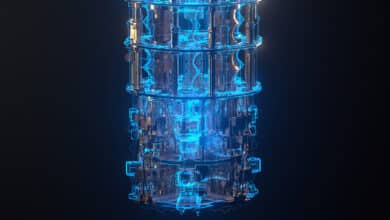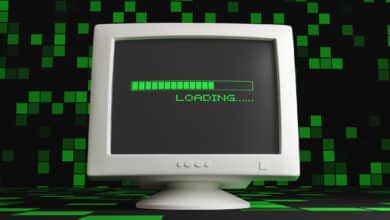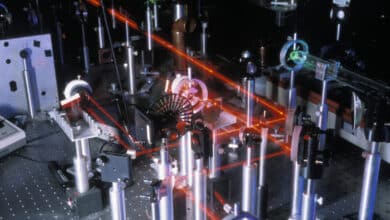Beyond “Many Paths at Once”: The True Power of Quantum Computers

Table of Contents
Quantum computers are often described with a mind-bending metaphor: they explore multiple paths simultaneously to find an answer. You might have heard people excitedly say that a quantum computer can “try all solutions at once” thanks to quantum magic.
This popular explanation isn’t exactly wrong – it’s a handy metaphor to get started – but it doesn’t tell the full story. In reality, quantum computers are not just massively parallel classical machines, and the truth about how they work is even more fascinating.
The “Multiple Paths at Once” Metaphor (and Why It Arises)
Many beginners imagine a quantum computer as akin to having an exponential number of classical processors working in parallel. For example, if you’re in a maze, a classical computer would try each path one by one (or use many processors to try many paths at the same time). A quantum computer, by contrast, is often said to act “as if it has a bird’s-eye view of the maze,” seemingly checking all paths simultaneously. This intuitive picture comes from the idea of quantum superposition, where quantum bits (qubits) can represent multiple states at the same time. If each qubit can be both 0 and 1 simultaneously, then with enough qubits you could encode all possible paths or solutions as a superposition of states. It feels like having countless parallel computations happening at once.
This metaphor has some truth: a quantum system can indeed evolve as if it’s processing many inputs in one go. In fact, one of the founders of quantum computing, David Deutsch, famously described a quantum computer as capable of carrying out a vast number of computations in parallel. This phenomenon is sometimes called quantum parallelism. For instance, with just 10 qubits you could theoretically have a superposition encoding 210 = 1024 different input values and evaluate a function on all of them in one quantum step. No wonder people get the impression that quantum computers try every option at once!
However, this is only half of the story. If we stopped here, one might think you could simply read out all those results and solve problems instantly – but quantum physics has a twist.
Superposition: Qubits Are in Many States at Once
To understand the limits of the “many paths” idea, let’s dig a bit deeper into superposition. A qubit is not like an ordinary bit that’s either 0 or 1 – it can be in a superposition of 0 and 1 at the same time. A common analogy is a spinning coin: while it’s spinning in the air, is it heads or tails? In a sense, it’s both until it lands. Similarly, a qubit could be, say, 50% in state |0⟩ and 50% in state |1⟩ (we would write this quantum state as (|0⟩ + |1⟩)/√2). As long as we don’t look (measure it), the qubit behaves as if it’s in both states. It’s not just a matter of our ignorance; the qubit genuinely holds a combination of possibilities. Even more remarkably, with multiple qubits, we can have superpositions of many combinations at once. For example, three qubits could be in an equal superposition of all 8 possible 3-bit values (|000⟩, |001⟩, ... |111⟩) simultaneously. It’s like a musical chord playing several notes together instead of a single note – a helpful metaphor, because these overlapping “notes” (states) can later interact with each other through quantum interference.
Superposition is the fundamental reason people say quantum computers explore multiple paths at once. It provides a rich canvas of parallel possibilities for an algorithm to work with. If you prepare your qubits in a superposition of all candidate solutions, you have in some sense laid out all the paths simultaneously. But here’s the catch: when you finally measure a qubit, this spell of ambiguity breaks – the qubit collapses into one of its basis states, 0 or 1. The outcome is probabilistic, weighted by the state’s coefficients (those weights are called probability amplitudes). Using our coin analogy, observing the spinning coin forces it to come up either heads or tails, randomly. This means if you naively set up a superposition of all 1024 possibilities and then measure, you do not get 1024 answers – you only get one randomly chosen result! Superposition alone “tries” many states at once, but it doesn’t automatically give a useful answer. In other words, quantum parallelism isn’t a free lunch – you can’t simply brute force by superposition and read out all outcomes.
So, how do we ever get a benefit from this? The secret sauce is not just superposition itself, but what we do with those parallel possibilities before measuring. This is where the true power of quantum computing comes in: interference.
Interference: Where the Quantum Magic Happens
If superposition provides the canvas of possibilities, quantum interference is the paintbrush that draws out the answer. In quantum mechanics, the state of a qubit (or a whole system of qubits) behaves a bit like a wave. Each possible outcome has an amplitude (a complex number) akin to a wave crest or trough. When quantum states evolve, these amplitudes can combine – they can interfere with each other. Some amplitudes will add up (constructive interference) and others will cancel out (destructive interference), much like overlapping water waves can reinforce or annihilate each other. This is the key to extracting useful information from a quantum computation.
A well-designed quantum algorithm choreographs the evolution of the qubits such that all those parallel paths interact in a deliberate way. The goal is to make the amplitudes of wrong answers interfere destructively (canceling each other out) while the amplitude of the right answer grows via constructive interference. By the time you measure the qubits, the correct solution should have a high probability of appearing, and the incorrect solutions should be mostly washed out. It’s a bit like tuning an instrument: out of a cacophony of simultaneous notes, you adjust phases and frequencies so that a beautiful clear tone (the solution) rings out above the noise.
Let’s revisit the maze analogy with this in mind. A classical brute-force search might traverse each path and mark dead ends. A naive “quantum” approach of just superposition would correspond to exploring all routes at once but then randomly stumbling out of one exit without knowing how you got there – not very helpful! The real quantum approach is more subtle: it’s as if waves were sent down every corridor of the maze at the same time. These waves have a special property: at every wrong turn or dead end, they interfere and cancel each other, but on the path leading to the exit, the waves reinforce each other. In the end, when you look for an exit, you’re much more likely to find the one correct path because that wave is strongest, while all the wrong paths are drowned out. The quantum computer isn’t literally “checking” each path in a classical sense; instead, it’s orchestrating interference across all paths so that you don’t have to check each one individually.
This is how a quantum computer derives the correct path without testing all the bad paths. Qubits don’t literally test every option simultaneously in the way multiple classical processors would; rather, they encodes multiple options as a superposed wave and then use interference to sift through them. When the computation is done, measuring the qubits reveals an answer that is heavily biased toward the correct solution, provided the algorithm did its job right.
Not Just Parallelism: A New Kind of Computing
It’s important to highlight how different this is from just throwing more classical processors at a problem. Classical parallelism can try many possibilities at once, but each processor still has to plod through its assigned path and explicitly find if it leads to a solution. Quantum computing uses the physics of superposition and interference to effectively bypass exploring each path one by one. Instead of brute force, it performs a kind of global calculation where all paths interact with each other simultaneously.
The outcome of a quantum algorithm is not a list of all answers; it’s typically a single answer (or a probability distribution over answers) that encodes something useful about all those parallel paths. A quantum algorithm uses operations to entangle qubits and generate interference patterns such that many possible outcomes are canceled out and the desired outcome is amplified – the amplified outcome is the solution to the computation.
This means quantum computers excel only when we can find clever ways to ask the right question of that interference pattern. We have to craft our quantum circuits (the sequence of quantum logic gates applied to qubits) to implement an algorithm that harnesses interference for a purpose. For example, Shor’s algorithm for factoring large numbers doesn’t just brute-force test every divisor; instead, it uses a quantum circuit to find a hidden periodicity in a mathematical function, using interference via the quantum Fourier transform to amplify the probability of the correct period (which leads to the factors). Grover’s algorithm for searching an unsorted database of N items doesn’t examine each item; it uses an interference routine that amplifies the probability of the target item and suppresses all others, yielding the answer in about √N steps instead of N. In both cases, the quantum computer isn’t getting the answer by sheer parallel checking – it’s exploiting patterns and global properties of the problem through interference. This is a fundamentally different approach to computing.
To summarize the distinction:
- Superposition (Many States at Once): This is a state of the quantum computer’s memory. It’s like having all possibilities laid out together, analogous to a chord of many notes. Superposition by itself doesn’t yield an answer – if you measure it too soon, you just get a random note from the chord. But it provides the raw material for parallel computation.
- Interference (Meaningful Parallel Processing): This is a process that happens when the quantum computer is executing an algorithm. It’s like playing all those notes and letting them interact. With the right algorithmic “score,” these notes interfere to produce a harmonious result – so when you finally listen (measure), you get a meaningful chord (the right answer) instead of noise. The power of quantum computing comes from carefully choreographed interference that accentuates correct results and nullifies incorrect ones.
Many popular explanations (and certainly some marketing hype) blur this line, giving the impression that a qubit in superposition automatically means an exponential speed-up. The reality is more nuanced and intriguing: yes, a quantum computer can compute on many states simultaneously, but you must orchestrate the computation so that you can later extract a useful result from those states. This requires a different mindset and algorithmic approach than classical computing.
The True Power of Quantum Computing
So why is this “more interesting and powerful” than the simplistic idea of massive parallelism? Because it means quantum computers open up new ways of solving problems that are infeasible for classical computers, even parallel ones. They leverage phenomena with no classical analog: interference and entanglement (where qubits become correlated in ways that defy independent description).
In practical terms, this allows certain problems to be solved dramatically faster than on any classical machine. For example, as quantum hardware and algorithms mature, we expect quantum computers to tackle tasks like breaking certain encryptions, optimizing complex systems, or simulating new molecules for drug discovery – tasks where the solution is hidden in a vast space of possibilities that classical computers can’t efficiently navigate. Quantum algorithms don’t brute force through that space; they tunnel through it by exploiting the structure of the problem with quantum mechanics.
It’s worth noting that quantum computers won’t speed up every problem – if there’s no clever way to encode the solution in an interference pattern, a quantum computer offers no advantage. But for those problems where researchers have found quantum algorithms, the speedups can be astounding. The value for business and technology is that quantum computers might find solutions in minutes to problems that would take classical computers millennia. And they do this not by simply being “faster” or “more parallel” in the conventional sense, but by computing in a fundamentally new way.
Conclusion: A New Paradigm, Not Just More Processors
The idea that quantum computers explore multiple paths simultaneously is a helpful starting point – it captures a hint of what makes them special. But the real magic is that quantum computers leverage superposition combined with interference to extract meaningful answers where classical methods falter. They are not just about doing the same old computations faster; they are about doing computations differently. This difference allows them to solve certain problems that would be practically impossible for normal computers, even if you threw massive parallel processing power at them.
In a universal gate-based quantum computer, we program sequences of quantum gates that set up these intricate superpositions and interference patterns. It’s like conducting a quantum orchestra: the qubits are the instruments holding multiple notes, and the gates are the conductor’s moves that make the notes interfere just right. When the performance ends – i.e., when we measure the qubits – the “music” we hear is the answer we were looking for.
In short, quantum computers don’t just try every path at once and magically pick the right one. Instead, they leverage the bizarre yet beautiful rules of quantum physics to cancel the wrong paths and highlight the right one. This is the true power of quantum computing: it transforms the way we solve problems by harnessing nature’s own strange mechanics. And as counter-intuitive as it all may sound, this approach has proven mathematically and experimentally capable of solving certain problems vastly faster than our best classical approaches. The metaphor of “many paths at once” barely scratches the surface – the real story is far more interesting, and it’s this quantum mechanism of interference that will drive the next revolution in computing.
Quantum Upside & Quantum Risk - Handled
My company - Applied Quantum - helps governments, enterprises, and investors prepare for both the upside and the risk of quantum technologies. We deliver concise board and investor briefings; demystify quantum computing, sensing, and communications; craft national and corporate strategies to capture advantage; and turn plans into delivery. We help you mitigate the cquantum risk by executing crypto‑inventory, crypto‑agility implementation, PQC migration, and broader defenses against the quantum threat. We run vendor due diligence, proof‑of‑value pilots, standards and policy alignment, workforce training, and procurement support, then oversee implementation across your organization. Contact me if you want help.



